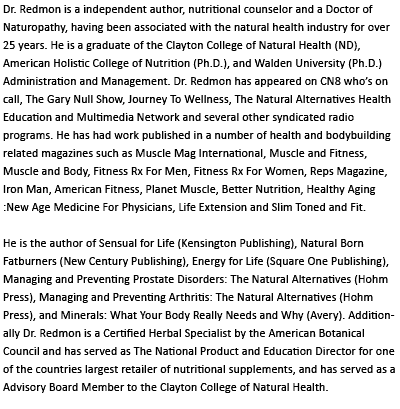However, what researchers know is that chromium directly potentiates (to make effective or more active) GTF. In fact, Dr. Passwater the author of GTF Chromium states that “the biggest distinction of GTF from other elements is its strict dependence of its own actions being based on the availability of the mineral chromium.”
The Anabolic Potential of Chromium
Many studies have confirmed chromium’s role as an anabolic agent and its ability to enhance the use of insulin, promote lean body mass by decreasing body fat. For example, current data indicates that chromium picolinate promotes sensitizing insulin-dependent brain receptors that regulate appetite and thermo-genesis (increased metabolic rate which burns calories by generating heat). In essence, the GTF/chromium axis activates and accelerates brown fat thermo-genesis. Also in a placebo-controlled study in the International Journal of Biosocial and Medical Research, it was reported that 200 to 400 mcg per day of chromium picolinate improved body composition and stimulated weight loss in healthy adults in-dependent of exercise activity. Additionally, researchers at Purdue University reported that after 12 weeks of being administered 925 mcgs of chromium picolinate, whole body weight strength increased by 20% in resistance trained individuals.
Chromium DHEA and Testosterone
Dr. Gary Evans, a professor of chemistry at Bemidji State University, and the author of Chromium Picolinate: Everything You Need to Know reminds us that muscles don’t simply make protein, they need a signal from a hormone to properly utilize it.As you know, when muscles are worked out on a regular basis, this enhances the brains ability to increase testosterone secretion. More circulating testosterone can lead to increased muscle mass. The problem however is that the amount of testosterone manufactured by the body has limits. To promote muscle development beyond the limits of testosterone production, the body can call upon the hormone DHEA (dehydroepiandrosterone) to perpetuate testosterones production as DHEA is easily converted to testosterone. The key point here is the fact that when there is less left over insulin merely circulating in the blood stream, the body produces less testosterone. Dr. Evans maintains that since the amount of insulin in the bloodstream is regulated in large part by the amount of chromium present in the bloodstream and that DHEA production isn’t limited, the body is capable of manufacturing enough of its own natural anabolic hormone (DHEA) to stimulate muscle growth and development, when adequate blood levels of chromium are present.
Food Sources of Chromium
Brewer’s yeast, calf liver, beef, black pepper, turkey liver, cheese, molasses, whole grain breads and cereals, oysters, chicken, potatoes, and most seafoods. While chromium is widely found in a variety of foods, it’s content is very small , usually less than 2 micrograms.
Please Note: Studies conducted on soil nutrient quality here in the United States indicates that soils are nearly devoid of this vital nutrient. Adding insult to injury, 80% of chromium is removed during the refining process of foods and nutrient contents of foods are not as plentiful as you might believe. Also, high sugar and loads of simple carbohydrates also stimulate excretion of chromium, as much as 300%.
Suggested dose: 50 to 200 mcgs daily because of the above factor. Athletes and health enthusiasts may need up to 600 to 800 mcgs daily to maintain adequate levels of chromium.
Last Words
As a body builder looking to build lean muscle mass, utilize protein, carbs, and other nutrients more efficiently as well as glucose, you should strongly consider the anabolic capabilities of chromium. While the dose ranges needed to elicit a positive anabolic response may be small, this mineral element however packs a powerful punch and will help insure you maintain a state of anabolic stability.


